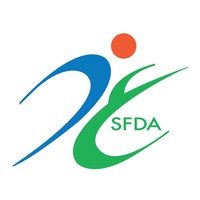The article highlights the aspects related to the regulatory status of the changes related to medical devices allowed for marketing and use in the country.

Table of Contents
The Saudi Food and Drug Authority (SFDA), the country’s regulatory agency in the sphere of healthcare products, has published a guidance document dedicated to medical device marketing authorization in the context of changes to registered medical devices. In particular, the document describes the approach to be applied when determining the regulatory status of changes and the actions to be taken by the parties responsible for medical devices in this respect.
It is also important to mention that provisions of the guidance are non-binding in their legal nature, nor are intended to introduce new rules or impose new obligations, but rather to provide additional clarifications regarding the applicable regulatory requirements in Saudi Arabia, as well as recommendations to be considered in order to ensure compliance thereto. The authority also reserves the right to make changes to the guidance, should such changes be reasonably necessary to reflect corresponding amendments to the underlying regulations.
As explained by the authority, the purpose of this document is to clarify the requirements, with examples, of reporting or notifying the SFDA of significant and non-significant changes to marketing authorized medical devices/suppliers, referred to in “Executive Regulation of Law of Medical Devices”/article (10-8), and “Requirements for Medical Devices Marketing Authorisation (MDS-REQ1)”/Section (5). The scope of the guidance covers any and all medical devices (including in vitro diagnostic ones) that are subject to registration under the current regulatory framework.
Regulatory Background
Under the general rule, any changes to registered medical devices should be subject to verification and validation in accordance with the documented procedures to be developed and implemented by the manufacturer. According to the guidance, the said procedures should cover, inter alia, such aspects as:
- Change control,
- Categorizing the changes as significant or non-significant, and
- Reporting or notifying the SFDA of the changes.
Timeframes and Procedures
The document further describes in detail the obligations of the manufacturer with respect to the changes depending on their significance. For instance, in case of significant changes, the appropriate report should be submitted to the authority for approval no later than 10 days from the date the changes took place. The said report should be submitted electronically via the online submission system.
In case of changes deemed to be non-significant, the applicable reporting requirements will slightly differ – for this type of change, the approval of the authority is not required. At the same time, the manufacturer would still have to notify the authority about the changes within 30 days from the date they took place. In order to do this, the manufacturer should send an email using the certificate number as a subject. This email should contain a short description of changes made (including the device name, MDMA number, medical device model number, and medical device national listing number). It is also important to mention that the complete information about the changes should be submitted to the authority within 90 days from the date the changes took place. The authority additionally emphasizes it may require the applicant to update the appropriate registration entry in the system.
According to the guidance, the manufacturer shall have the SFDA approval for the updating MDMA application(s) on GHAD system, prior to supplying any device affected by significant change(s).
The document also provides a flowchart illustrating the above process in order to assist medical device manufacturers in following the said approach when reporting/notifying changes to medical devices they are responsible for.

Examples
Apart from the description of general rules and clarifications associated thereto, the document also provides several examples of changes and explains the approach to be applied when determining their regulatory nature and the actions to be taken in this respect. For convenience, the changes are divided into categories, namely:
Changes to the intended use of a medical device and labeling used: According to the guidance, the changes to the information on the label or instructions for use, as well as to the intended purpose or sterilization methods used would be considered significant. The same approach applies with respect to:
- Changes to the labeling from single-use to re-usable,
- Adding a new procedure for a use or purpose,
- Changes to the MRI compatibility status of a device,
- Changes to the storage conditions for a device whose performance may be impacted by these conditions,
- Changes to the name or model of the device, as well as changes to the name and/or address of the manufacturer.
At the same time, changes to the artwork, color, font, or layout of the packaging and labeling of a device will be considered non-significant.
Changes to critical subcontractors/suppliers should be classified as follows. If such changes could potentially affect the safety, performance, or effectiveness of a medical device in question, or are related to the changes in design, they will be considered significant. Similar approach will apply with respect to changes to the type, source, processing, and/or supplier of biological materials. At the same time, non-significant changes would be:
- Changes to non-critical parts or suppliers that can be demonstrated to still meet the acceptance criteria established by the manufacturer.
- Changes to the supplier’s manufacturing process, facility, software, or equipment if those changes do not affect the device’s safety, effectiveness, functionality, or performance specifications.
In summary, the present SFDA guidance provides additional clarifications regarding the approach to be applied with respect to changes to registered medical devices allowed for marketing and use in the country. The document describes in detail the way the regulatory status of such changes to be determined, and also the actions to be taken in order to ensure compliance with the respective regulatory requirements.
Sources:
https://sfda.gov.sa/sites/default/files/2023-03/MDS-G012A.pdf
How Can RegDesk Help?
RegDesk is an AI-powered Regulatory Information Management System (RIMS) designed to simplify global compliance for medical device companies. With regulatory intelligence covering 120+ markets, RegDesk helps you prepare and publish global submissions, manage standards, conduct impact assessments, and stay ahead of regulatory changes all from a single, centralized platform. Expanding into new markets has never been easier.

